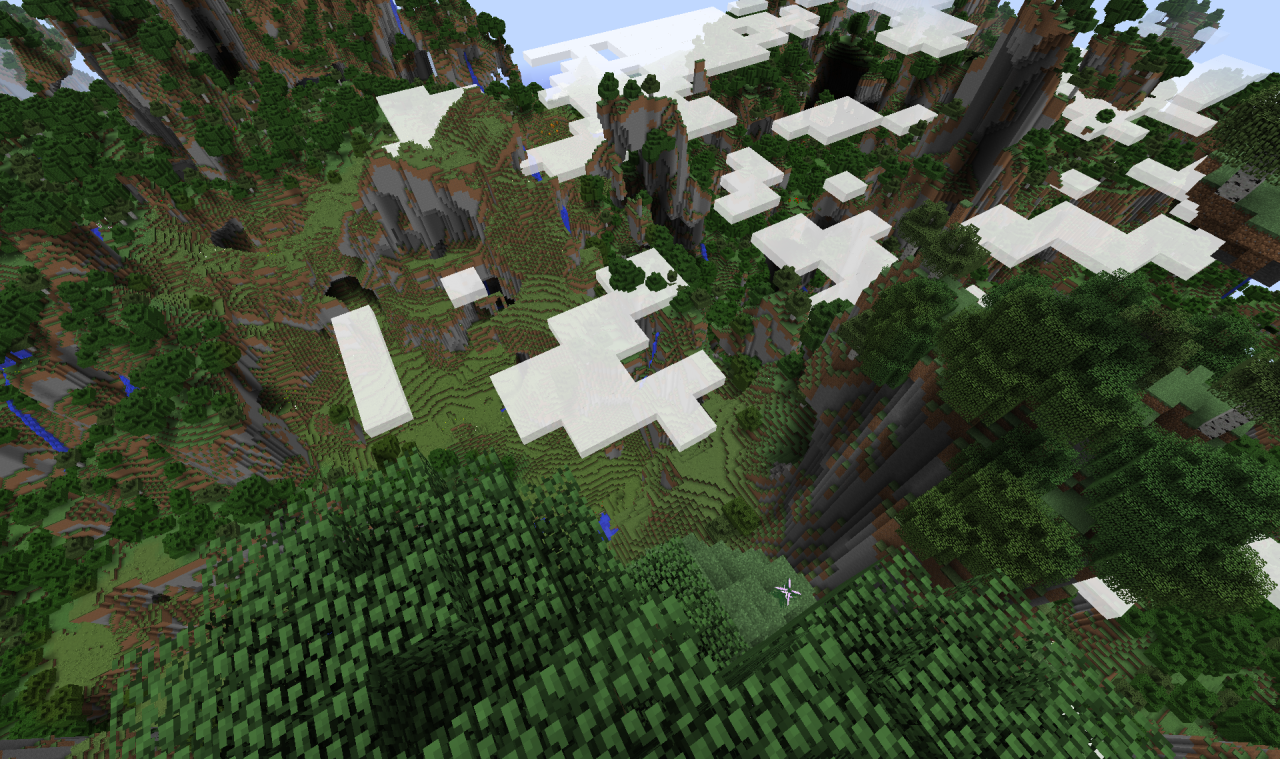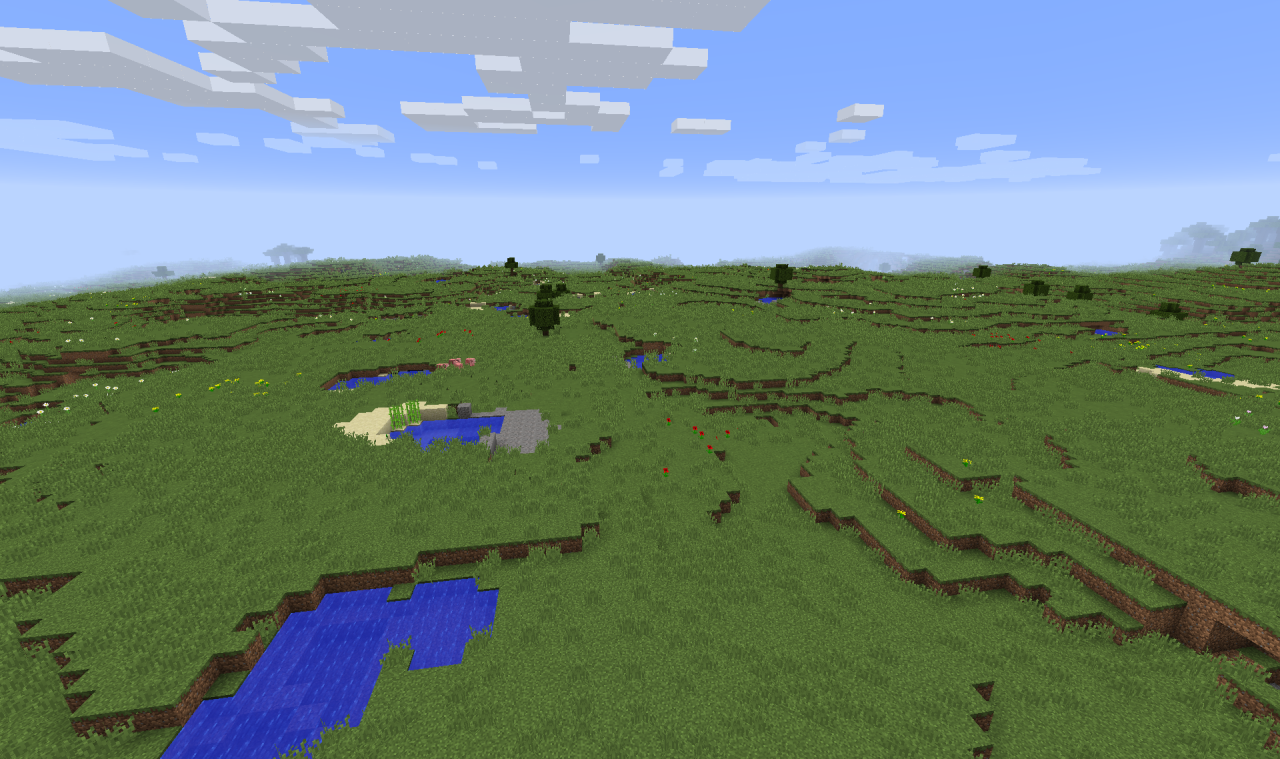





Biomes
In biogeography, a biome is a set of regions that share similar plants, animals, and climate. Borrowing from this concept, Minecraft added biomes in Alpha 1.2.0, using them to control the variety in the terrain generation. Based on how the term has come to be used, I’d say that in procedural generation the term has come to mean “a region of generated content that shares a common generator or generator parameters”.
Real-world biomes are classified with the intersection of precipitation and temperature, sometimes graphed visually on a Whittaker diagram. Minecraft’s biomes use similar parameters to try to stay close similar biomes.

Aside from replicating real-world variety, this has two implications for the generation:
First, it creates more variety. Having different rules in different places lets the results be wildly different, because the different regions don’t have to share the same procedures. A forest tree-placement algorithm can be different than a savanna tree-placement algorithm.
Second, it gives a measure of consistency and structure. Deserts aren’t just different from forests, they’re different in predictable ways. That’s why, in Minecraft, if you need sand you know to look for a desert, not a jungle. Being able to learn patterns like that makes the world more understandable.

Minecraft isn’t the only game with biomes, of course. Dwarf Fortress includes biomes as a side-effect of its obsessively exacting world generation. Terraria uses them as part of its progression mechanic. Which is a good example of one way you can extend biomes further: by using them like levels in a metroidvania (or the way Lenna’s Inception’s uses the different regions as a difficulty progression).
Another way you can use biomes is as one layer in a multi-layered set of generators. One way to look at a world generator that uses biomes as having a biome-placement generator that has specific generators nested inside it for each region type. That’s why biomes in procedural generation are more than just the ecological biomes: you can use the same concept to describe a generator that creates a specific type of city neighborhood. Your city generator can have a downtown biome, a waterfront biome, and a historical district biome, each with its own buildings and behaviors.
Indeed, one of the first biomes added to Minecraft was the Nether. And while the Nether is a unique biosphere, it doesn’t exactly fit on traditional ecological charts.
